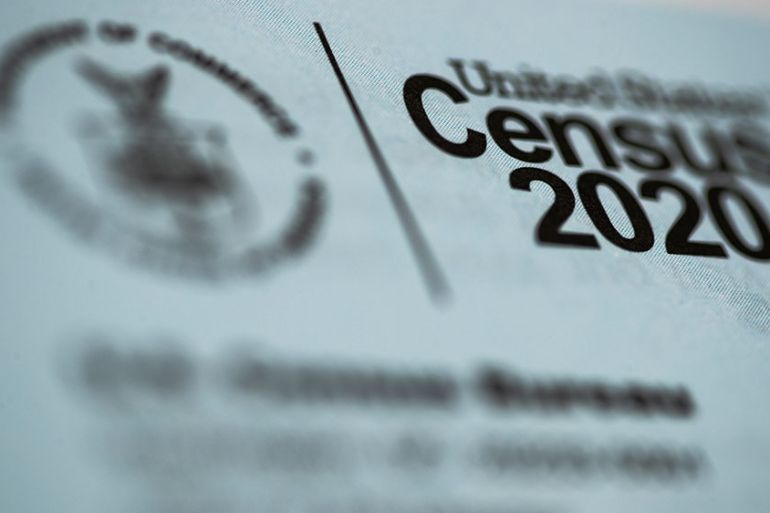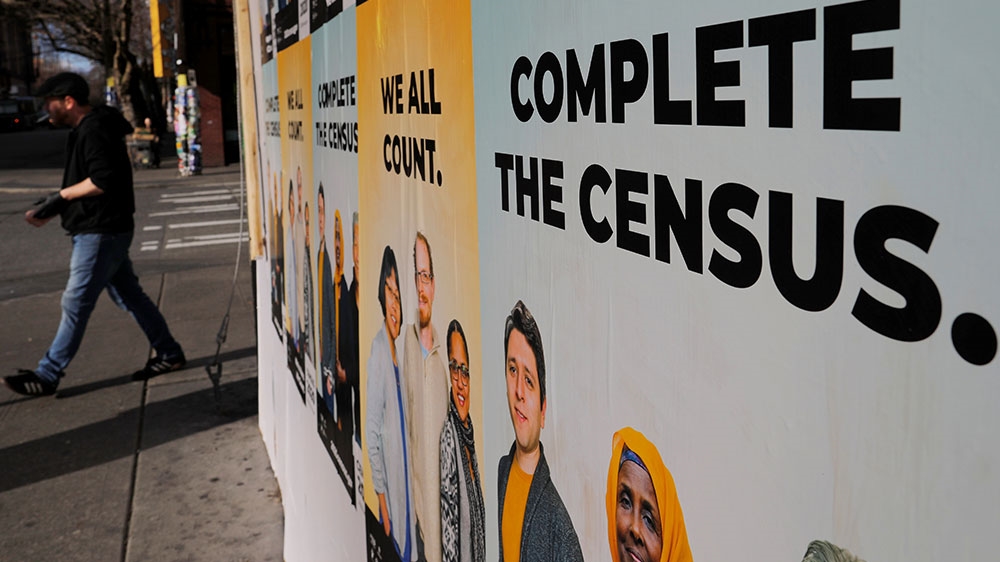Why is there no MENA category on the 2020 US census?
The 2020 US census suggests those of Lebanese, Egyptian and other MENA descent select ‘white’ on the race question.

The United States Census Bureau says the 2020 census is an “opportunity to shape the future of your community”, but for many Arabs, Iranians and others of the Middle East and North Africa (MENA) descent, the decennial count is only a reminder of the lack of recognition.
The US census, taken every 10 years since 1790, helps the federal government determine everything from congressional seats to how about $1.5 trillion in federal spending is distributed.
Keep reading
list of 3 itemsUS Supreme Court blocks Trump’s census citizenship question plan
Should the US ask about citizenship on its census?
Despite repeated attempts to add a MENA category, those of Middle Eastern and North African descent completing this year’s census, like in year’s past, will effectively be forced to identify as “white” – a decision that some say aggregates Arabs and others’ numbers in favour of the white demographic.
In a 2015 Census Bureau study, researchers concluded that “it is optimal to use a dedicated Middle Eastern or North African category” for the 2020 census. The researchers also wrote, “The inclusion of a MENA category significantly decreased the overall percentage of respondents reporting as White.”
The administration of former President Barack Obama was considering adding a MENA category, but in 2018, officials said that a category would not be added, citing concerns that MENA was seen not as a race, but an ethnicity, which the bureau has not researched.
The question about race lists “Lebanese” and “Egyptian” as examples of “white”. Residents can specify what ethnicity they identify with by writing it on the form.
![A screengrab of the planned 2020 question on race [US Census Bureau]](/wp-content/uploads/2020/04/298cb935263642c68e068b36b2716a2c_6.jpeg)
Skewing data
Advocates for the MENA category’s inclusion blame the administration of President Donald Trump, who has targeted many from the Middle East and North Africa, including signing an order that bans nationals from several Muslim-majority countries.
“The MENA category was a 95 percent certainty going to happen until the Trump administration came in,” said Samer Khalaf, the national president of American-Arab Anti-Discrimination Committee (ADC).
Khalaf said the exclusion of the MENA category was a politicised act.
“Why? If you take Arabs out of the white category, it’s going to drop,” Khalaf told Al Jazeera. “Almost to the point that it’s going to be a white minority and God forbid that should happen when you basically have government officials who are white extremists.”
Mike Friedrich, a representative for the Census Bureau, said further research is still needed before implementing a MENA category. The bureau did not respond to questions on aggregated effects, conflicts with the OMB or how a category would affect federal funding for individuals from the MENA region.
Stigmatisation
Beyond these issues, a lack of recognition also allows for continued civil rights abuses – and in the case of Arab-Americans, a further stigmatised image that can permeate into policy, advocates say.
The many types of Arab-Americans all face “consistent othering in political and popular discourse”, said Matthew Jaber Stiffler, a University of Michigan professor of Arab-American studies, adding that their connection lies in being “stereotyped by the general public”.
When a MENA demographic as diverse as Arabs is diminished into a one-dimensional group, Stiffler said, it creates a paradox: on one hand, Arab-Americans are “connected by constantly fighting stereotypes” and on the other, the lines of a “racial hierarchy” within the community are blurred.
“A 100 years ago, Arabs were literally fighting in court to be white,” Stiffler said, who is also Arab-American. “Identity for Arabs has always been in relation to the majority group.”

The Naturalization Act of 1790, the same year the census started, allowed citizenship only to “a free white person”. In 1915, George Dow, an immigrant from Syria, had to prove he was white and not “Asiatic” to gain citizenship.
Over the years, laws better reflected the nation’s racial makeup. It was only until the Immigration and Nationality Act of 1952 that the US outlawed discrimination in the naturalisation process.
However, with issues like “the Muslim ban and immigration”, Stiffler said, it reinforces “the tenor that all Arabs look or act a certain way”.
A MENA category would represent a diverse set of dismissed identities with specific needs ... Getting census data would be a good start to meet those needs.
Former University of Michigan students Jad Elharake, Nadine Jawad and Ibtihal Makki led their school in 2017 including a MENA category on university applications.
Elharake, who spearheaded the movement, said a diverse group of MENA people supported their efforts with no pushback. The trio hopes their efforts are reflected in a future census.
“A MENA category would represent a diverse set of dismissed identities with specific needs,” Elharake said. “Getting census data would be a good start to meet those needs.”
This year’s census is also taking place during the coronavirus pandemic, which experts say could skew the data even further, experts say.
For someone like Stuart Elnagdy, who is half-Egyptian and half-Mexican, filling the census has one problem: “no accurate choice”, he said.
“If there’s no ‘other’, then I choose Hispanic,” he said. “I would prefer a MENA box over anything else but I’m definitely not putting down white. My Latino side already went through that fight.”